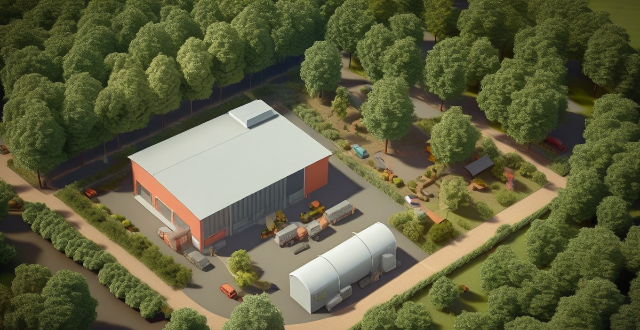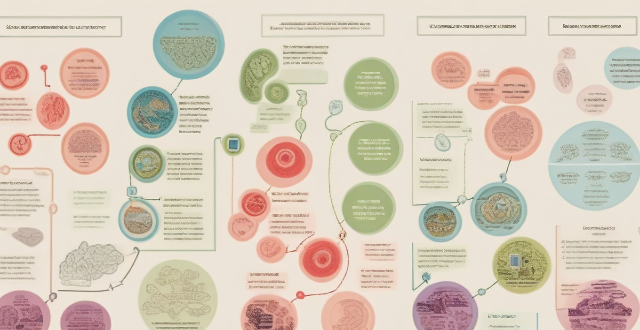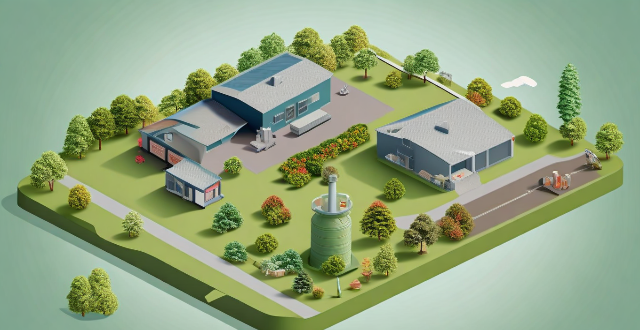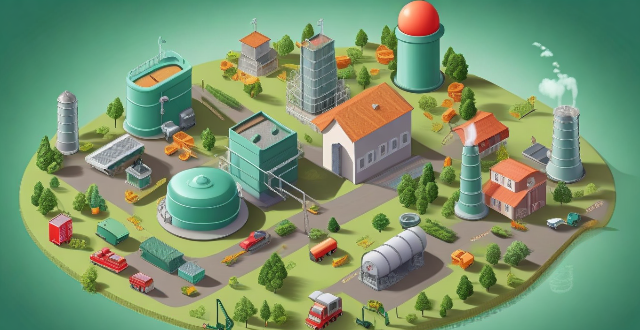Atmosphere Offset

What are some examples of carbon offset projects ?
Carbon offset projects are initiatives designed to reduce or offset the emission of carbon dioxide (CO2) and other greenhouse gases into the atmosphere. These projects aim to mitigate the impacts of climate change by investing in activities that remove CO2 from the atmosphere or prevent its release in the first place. In this guide, we will explore some examples of carbon offset projects and how they contribute to the global effort to combat climate change.

How much does it cost to offset a ton of carbon dioxide ?
The cost to offset a ton of carbon dioxide varies depending on the method used and the region where the offset takes place. Factors affecting the cost include the method of offset, region, project complexity, and verification and certification processes. The average cost of offsetting a ton of carbon dioxide ranges from $10 to $100 per ton. Tree planting, renewable energy projects, and carbon capture and storage are some common methods of offsetting carbon dioxide emissions.

How do carbon offset projects get verified ?
The verification process for carbon offset projects involves multiple stages, including project registration, preparation of a Project Design Document (PDD), review and approval by third-party auditors, ongoing Monitoring, Reporting, and Verification (MRV), certification, issuance of credits, continuous improvement, and re-verification. This process ensures the genuineness, effectiveness, and sustainability of these projects in mitigating climate change. Key points to remember include the importance of transparency, independent verification, continuous monitoring, and adaptability.

What is carbon offsetting ?
Carbon offsetting is a strategy aimed at counteracting the carbon emissions that contribute to global warming by funding projects that reduce or remove an equivalent amount of CO2 from the atmosphere. These projects can range from renewable energy development and reforestation to carbon capture and storage. The process involves calculating one's carbon footprint, choosing an offset project, funding it, and ensuring its effectiveness through monitoring and verification. While carbon offsetting can raise environmental awareness and support sustainable projects, it also faces criticism for potential quality control issues and the risk of being seen as a justification for not directly reducing emissions.

How can individuals participate in carbon offsetting ?
Carbon offsetting allows individuals to compensate for their carbon emissions by investing in projects that reduce atmospheric CO2. To participate, understand your carbon footprint, choose a reputable offset provider, and set an offset goal. Support green energy, plant trees, adopt sustainable practices, and educate others on the importance of offsetting. This helps mitigate personal emissions and supports sustainability initiatives.

How does carbon offsetting work ?
Carbon offsetting works by assessing emissions, identifying suitable offsetting projects like renewable energy or reforestation, purchasing carbon credits from these projects, and continuously monitoring their effectiveness. This process helps reduce the overall carbon footprint of individuals or organizations while contributing to global efforts to combat climate change.

What actions can I take to offset the carbon footprint calculated by the calculator ?
This article provides a comprehensive guide on how individuals can offset their carbon footprint through various actions. These actions include reducing energy consumption, using public transportation or carpooling, reducing waste, eating a plant-based diet, and supporting renewable energy. Each section offers specific tips and strategies that readers can implement in their daily lives to reduce their GHG emissions. By following these steps, individuals can contribute to mitigating climate change and promoting a more sustainable future.

Can carbon offsetting be used as a substitute for government action on climate change ?
The article discusses the concept of carbon offsetting and its potential as a substitute for government action on climate change. Carbon offsetting involves investing in projects that reduce or remove greenhouse gases from the atmosphere, such as renewable energy sources and reforestation. While it has advantages like individual responsibility and immediate impact, it also has limitations like not being a complete solution and lack of regulation. Government action is crucial in addressing climate change through regulation, infrastructure, and education. The conclusion states that carbon offsetting can be a useful tool, but it cannot replace government action.

Are there any drawbacks to carbon offsetting ?
Carbon offsetting, a method to reduce one's carbon footprint through investing in projects that aim to reduce or offset greenhouse gas emissions, is not without its drawbacks. These include lack of regulation in the industry, potential issues with additionality (whether the offset project would have happened anyway), permanence (ongoing maintenance and monitoring required for sustained carbon benefits), leakage (emissions reduced in one area but increased in another due to market forces), cost-effectiveness (other methods may provide greater emissions reductions at a lower cost), and ethical considerations (relying on offsets may allow individuals and organizations to continue their high-emission lifestyles without making significant changes).

What is the atmosphere like at an idol concert ?
Attending an idol concert is an experience that is often filled with excitement, energy, and a sense of community. The atmosphere at these events varies depending on the artist, venue, and fans in attendance, but there are some common elements that make up the overall vibe. These include electric energy, high-octane performances, lighting and visual effects, fan interaction through call-and-response segments and fanchants, as well as a strong sense of community spirit among attendees. Many fans also choose to express their love for their favorite idol by dressing up as them or wearing clothes inspired by their style. Overall, attending an idol concert is an immersive experience that celebrates the power of music and the bond between artists and their fans.

Are there any international standards for carbon credit systems ?
There are several international standards and protocols that govern carbon credit systems, including the Climate Action Reserve (CAR), the International Carbon Reduction and Offset Alliance (ICROA), and regional and national standards such as the European Union Emissions Trading System (EU ETS) and the North American Carbon Programme (NACP). These standards ensure the credibility, transparency, and integrity of carbon offset projects by setting rigorous guidelines for project developers to follow. By adhering to these standards, organizations can demonstrate their commitment to combating climate change and contribute to a more sustainable future.

What role do carbon offsets play in a company's CSR approach to addressing climate change ?
**Summary:** The text discusses the role of carbon offsets in corporate social responsibility (CSR) strategies aimed at mitigating climate change. Carbon offsets, defined as investments in emission reduction projects that go beyond legal requirements, help companies counterbalance their operational emissions. Implementing carbon offsets can aid companies in achieving emission reduction targets, investing in sustainable projects, engaging stakeholders, managing risks related to environmental regulations, and fostering innovation. Key steps in implementing a carbon offsetting program include conducting an emission audit, selecting suitable offset projects, integrating offsets into the business model, ensuring transparency in reporting, and engaging stakeholders. By incorporating carbon offsets into their CSR strategies, companies can contribute to combating climate change while enhancing their reputation and potentially reaching new markets.

What are the benefits of carbon offsetting for businesses ?
Carbon offsetting is a strategy that businesses can use to reduce their carbon footprint and mitigate the impact of their operations on the environment. By investing in projects that offset their emissions, businesses can demonstrate their commitment to sustainability and contribute to global efforts to combat climate change. Some of the benefits of carbon offsetting for businesses include reduced carbon footprint, improved reputation and brand image, financial benefits, and stakeholder engagement. By investing in carbon offsetting projects, businesses can demonstrate their commitment to sustainability and contribute to global efforts to combat climate change.

What are the most family-friendly island resorts ?
When it comes to choosing a family-friendly island resort, there are several factors to consider, including the availability of activities for children, the quality of accommodations, the safety of the surroundings, and the overall atmosphere of the resort. Here are some of the most family-friendly island resorts that you may want to consider: 1. **Atlantis Paradise Island, Bahamas** offers a wide range of activities for children, spacious rooms and suites, a 24-hour security system, and a lively and vibrant atmosphere. 2. **Disney's Aulani Resort & Spa, Hawaii** offers a variety of activities for children, spacious rooms and suites, a 24-hour security system, and a relaxed and laid-back atmosphere. 3. **Club Med Turkoise, Turks & Caicos** offers a wide range of activities for children, spacious rooms and suites, a 24-hour security system, and a fun and lively atmosphere. 4. **Beaches Negril, Jamaica** offers a wide range of activities for children, spacious rooms and suites, a 24-hour security system, and a relaxed and laid-back atmosphere. 5. **Four Seasons Resort Maui at Wailea, Hawaii** offers a variety of activities for children, spacious rooms and suites, a 24-hour security system, and a luxurious and tranquil atmosphere.

What are some examples of gases that contribute to the greenhouse effect ?
The greenhouse effect is a natural process that warms the Earth's surface. Human activities have increased the concentration of certain gases in the atmosphere, leading to an enhanced greenhouse effect and global warming. Major greenhouse gases include carbon dioxide (CO2), methane (CH4), nitrous oxide (N2O), fluorinated gases, ozone, and water vapor. These gases trap heat in the Earth's atmosphere and contribute to global warming. Reducing emissions of these gases is essential to mitigate climate change and its impacts on ecosystems, societies, and economies worldwide.

What is the greenhouse effect ?
The greenhouse effect is a natural process that warms the Earth's surface through the trapping of heat by greenhouse gases. These gases include carbon dioxide (CO2), methane (CH4), and nitrous oxide (N2O), which are released by various human activities and natural processes. The greenhouse effect is essential for life on Earth, but human-induced enhancement of this effect has led to global warming and associated environmental issues.

Is carbon offsetting effective in reducing greenhouse gas emissions ?
Carbon offsetting is a strategy to compensate for CO2 emissions by investing in projects that reduce, avoid, or absorb an equivalent amount of CO2 elsewhere. While it can provide immediate action and support clean projects, there's a lack of standardization and potential for perverse incentives. Effectiveness depends on project quality and organizational integrity. It should be part of a broader strategy, not seen as a silver bullet.

How can individuals participate in a carbon credit system ?
Carbon credit systems enable individuals to participate in reducing greenhouse gas emissions by buying, selling, or supporting carbon offsets. Individuals can offset their own carbon footprint by purchasing credits from verified projects, sell credits generated from their sustainable projects, or support the growth of carbon credit initiatives through advocacy and investment. Participation in these systems is a significant step towards combating climate change and fostering a more sustainable environment.

What is the future of carbon credits in global climate policy ?
Carbon credits, also known as carbon offsets, are a key component of global climate policy. They provide a way for individuals, companies, and governments to reduce their carbon footprint by investing in projects that reduce greenhouse gas emissions or sequester carbon dioxide from the atmosphere. The future of carbon credits is closely tied to the success of global efforts to mitigate climate change. Carbon credits play a crucial role in offsetting emissions from various sectors such as transportation, manufacturing, and energy production. The existence of a market for carbon credits encourages investments in low-carbon technologies and sustainable practices. Carbon credits are integral to the functioning of international agreements like the Paris Agreement. Countries committed to reducing their carbon footprint can use carbon credits to meet their targets more efficiently. One of the main challenges with carbon credits is ensuring their quality and effectiveness. There have been instances where the actual environmental benefit of a project does not match its claimed reduction in carbon emissions. Another issue is the persistence of the carbon reduction achieved by these projects. For example, if a reforestation project fails to maintain the growth of new trees, the sequestered carbon could be released back into the atmosphere. Carbon leakage occurs when emission reductions in one area lead to increased emissions elsewhere. This can happen if industries simply relocate to areas with less stringent regulations rather than adopting cleaner technologies. To address concerns about quality and verification, there will likely be a push for more rigorous standards and auditing processes within the carbon credit industry. Advances in technology will enhance the monitoring and measurement of carbon reduction projects, making them more transparent and reliable. As awareness grows about climate change, more individuals and organizations are expected to participate in carbon offset programs, increasing the demand for high-quality carbon credits. Carbon credits will increasingly be integrated with other climate policies such as carbon taxes and cap-and-trade systems to create a comprehensive approach to tackling climate change.

What is the future of carbon credit systems ?
The future of carbon credit systems is uncertain and depends on various factors such as policy decisions, technological advancements, public opinion, and market dynamics. Governments play a crucial role in shaping the future of these systems through regulations and enforcement. Technological innovations can both increase and decrease the value of carbon credits. Public opinion can drive demand for carbon credits, while market dynamics will shape the industry's evolution. Despite challenges, there are opportunities for growth and improvement in this important area of environmental protection.

How effective is geoengineering in combating climate change ?
Geoengineering, the large-scale manipulation of the environment to combat climate change, has potential benefits and risks. It includes methods like Solar Radiation Management (SRM) and Carbon Dioxide Removal (CDR), which could theoretically offset global warming and lower atmospheric CO2 levels, respectively. However, geoengineering is not a solution to the root cause of climate change, carries uncertain side effects, and raises equity and ethical concerns. Its effectiveness is also yet to be proven at a relevant scale. Therefore, while research into geoengineering should continue with caution, it should not replace the urgent need for global greenhouse gas emission reduction and adaptation strategies.

What is a carbon credit system ?
Carbon Credit System: A market-based approach that incentivizes the reduction of greenhouse gas emissions by allowing trades of emission allowances and investments in emission-reducing projects. It operates on principles like emissions trading, offsetting, and regulation to drive environmental benefits and innovation. However, challenges such as quality assurance, persistence in reducing actual emissions, and equity concerns need to be addressed for its effective implementation.

How does urban vegetation impact air pollution levels ?
Urban vegetation, including trees, shrubs, and grasses in urban areas, plays a crucial role in mitigating air pollution. It improves air quality by reducing pollutants such as carbon dioxide (CO2), nitrogen oxides (NOx), and particulate matter (PM). Plants absorb CO2 from the atmosphere during photosynthesis, which helps to reduce the concentration of this primary greenhouse gas contributing to global warming. Trees also store carbon in their biomass, effectively removing it from the atmosphere through a process known as carbon sequestration. The large leaf surface area of urban vegetation helps to capture and reduce nitrogen oxides (NOx) in the air. When NOx comes into contact with plant leaves, it reacts with the stomata to form nitrates, which are then absorbed by the plant. Soil microorganisms play a vital role in breaking down organic matter and converting it into nutrients that plants can use. These microorganisms also help to reduce NOx levels by converting them into harmless compounds such as nitrogen gas. Urban vegetation can trap particulate matter (PM) through its leaves and bark, preventing it from being inhaled by humans and animals. This helps to reduce the health risks associated with PM exposure, such as respiratory problems and cardiovascular diseases. Trees act as wind breaks, reducing wind speed and preventing PM from becoming airborne, which helps to keep PM levels low in urban areas and improve overall air quality. In conclusion, promoting urban green spaces and encouraging the planting of more trees and shrubs in cities is essential to mitigate the negative effects of air pollution.

What is the connection between deforestation for stadium construction and increased greenhouse gas emissions ?
Deforestation for stadium construction leads to increased greenhouse gas emissions by reducing carbon sinks, disturbing soil, consuming energy during construction and operation, altering albedo, increasing transportation-related emissions, generating waste, affecting biodiversity, and changing water regulation. Mitigation strategies include sustainable design, using renewable energy, promoting public transportation, carbon offsetting, and effective waste management.

What role do tourists play in contributing to climate change through their travel activities ?
Tourism, while beneficial economically and culturally, contributes significantly to climate change due to carbon emissions from various travel activities. These include air travel, land travel, accommodation, activities, food and beverage choices, shopping habits, and packing and planning decisions. To mitigate this impact, tourists can offset emissions, choose sustainable travel options, stay in eco-friendly accommodations, participate in responsible tourism, reduce waste, support local produce, shop mindfully, plan ahead, advocate for change, and educate others on responsible travel practices.

What are the current climate goals set by the United Nations ?
The United Nations has set several climate goals to address the global climate crisis. These goals are part of the Sustainable Development Goals (SDGs) and aim to reduce greenhouse gas emissions, promote renewable energy, and protect ecosystems. One of the primary climate goals is to achieve net-zero emissions by 2050. This means that countries must balance their greenhouse gas emissions with an equivalent amount of removal or offset through measures such as afforestation or carbon capture technologies. Another important goal is to enhance resilience and adaptation to the impacts of climate change. This involves preparing for and reducing the risks associated with natural disasters, such as floods, droughts, and heatwaves. Integrating climate change measures into policies is crucial for achieving sustainable development. Governments should consider the environmental implications of their decisions and prioritize actions that benefit both people and the planet. Protecting ecosystems and biodiversity is essential for maintaining a healthy planet. Deforestation, habitat destruction, and pollution threaten many species and ecosystems, which can have far-reaching consequences for human well-being. In conclusion, the United Nations' current climate goals focus on achieving net-zero emissions by 2050, enhancing resilience and adaptation to climate change, integrating climate change measures into policies, and protecting ecosystems and biodiversity. These goals aim to create a more sustainable future for all inhabitants of our planet.

What factors do carbon footprint calculators typically consider when calculating emissions ?
Carbon footprint calculators estimate the greenhouse gas emissions from personal lifestyle, organizational activities, and product lifecycles. Key factors include housing energy use, transportation, diet, waste management, operational energy, business travel, supply chain impacts, employee commuting, raw material extraction, manufacturing processes, distribution logistics, product use, and disposal methods. Additional considerations might involve water consumption, land use, and consumer goods production. Accurate estimation requires comprehensive data across these categories to identify emission reduction opportunities and support climate change mitigation efforts.